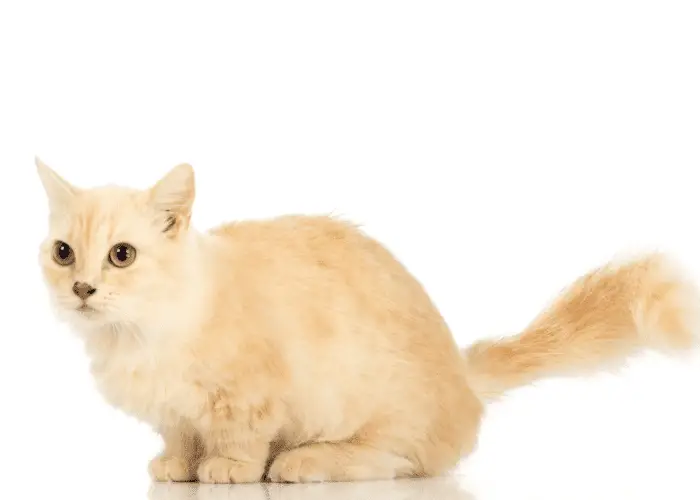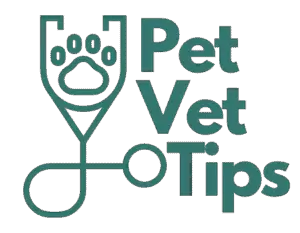
It is commonly known that cats can land on their feet and survive falls from incredible heights. This is due to the phenomenon called the cat-righting reflex. So how does having such short legs affect a Munchkin’s ability to land on their feet?
Munchkin cats cannot always land on their feet the same way cats with longer legs can. This is because cats will use their extended legs to help twist their bodies mid-air. Munchkins are also less capable of absorbing impact and are prone to chin injuries when landing on their feet.
Due to their short legs, Munchkins are not gifted with the usual feline athletic stealth and cannot jump as high or run as fast as their longer-legged feline counterparts. Which often leaves us with the question: how did that Munchkin reach that height in the first place?
Just because Munchkins have a disadvantage in climbing ability, it does not mean they have the same feline desires to have a view from a height, and they will often find themselves in a position where they might have to brace themselves for a fall. Let’s see how a Munchkin would cope in a situation like this.
The Cat Righting Reflex
A few characteristics enable cats to twist very effectively in mid-air. The first is their incredibly flexible spines. The second is that cats don’t have clavicles. This allows them to rotate with ease (some cats have rudimentary collar bones, not large enough to hinder their ability to twist).
Other important factors that act in a cat’s favor when falling are their light body weight and furry coats. Their fluffy coats help them increase drag (increased air resistance), and their light body weight helps them minimize their acceleration while falling.
This means that they do not reach nearly the same speed when falling as, for example, a smooth rock of a similar size, dropped from an equal height, will reach.
Apart from the visual cues, the vestibular apparatus in the ear is the primary mechanism that helps an animal know which way is up. This mechanism allows a cat to be able to tell which way is up and which is down even when they are unable to see. A cat will orient its body horizontally using visual and vestibular cues to increase drag and reduce the velocity with which they fall.
When watching slow-motion footage of what cats do in mid-air while falling, you might notice how they fist pull their front legs in while extending their back legs to twist the front parts of their bodies and then do the opposite by pulling their back legs in and extend their front legs out to rotate the back part of their bodies.
Cats do this to divide their body into two parts that can balance each other out in mid-air (flexing their spines help with this). They increase the spinning momentum of either the front or back half of their body by tucking their limbs in, which leads to increased spinning momentum of that half, allowing them to twist into an upright position while extending the legs of the opposite part of their body.
To understand this twisting momentum by extending or flexing their limbs, imagine how a figure skater spins faster when she pulls her arms and then slows down as she extends her arms out.
Munchkins Are At A Disadvantage When Trying To Right Themselves Mid-Air
Due to their short legs, munchkins are not very good at righting themselves when falling quickly enough to land on their feet and will not always land on their feet. They can right themselves if they are airborne for long enough, but increased time falling will lead to increased falling momentum, and this makes munchkins prone to chin injuries.
Munchkin cats’ short legs give them an obvious disadvantage when twisting mid-air. Their shorter legs cause them to have more inertia, making controlled twisting more difficult.
The second disadvantage is that their shorter legs provide less ‘impact absorbing’ ability when they hit the ground. Longer-legged cats will stretch their legs out and then bend them as they touch the ground to absorb the momentum.
One of the most common injuries seen in cats falling from a height is jaw injuries. This happens when cats knock their chins on the ground when landing.
Due to having less momentum absorbing ability from their legs and their chins being so close to the ground, Munchkins are prone to knocking their chins on the ground if they can right themselves.
From How High Can Munchkins Safely Fall?
This is a tricky question to answer accurately as no studies have been done on Munchkins, and many factors play into whether a cat can land on their feet.
As a general rule, Munchkins are able to right themselves when falling, provided that their starting position is close enough to upright and the fall is high enough to allow them to bend and extend their short legs to twist the front and back halves of their body respectively.
The downside is the higher the fall; the more likely a munchkin is to knock their chin on the ground.
Conclusion
Munchkins can land on their feet most of the time. However, they have an obvious disadvantage compared to other cats when it comes to their righting reflex abilities, and this is why it is recommended that Munchkins be kept indoors.
References
- Goodman Milne, E., 2018. Time to stop accepting ‘normal for the breed.’ Veterinary Record, [online] 183(20), pp.630-630. Available at: <https://www.proquest.com/openview/f1c1145faca78bc335257ebb61763e0e/1?pq-origsite=gscholar&cbl=2041027>.
- Gustafsson, K., 2015. Genetics ANd Phenotypes Of Chondrodysplasia (Achondroplasia) Across Domestic Animal SPecies. Szent Istvan University Faculty Of Veterinary Science Budapest, [online] Institute for Animal Breeding, Nutritional Laboratory Animal Science, Department of Veterinary Genetics and Animal Breeding. Available at: <http://www.huveta.hu/bitstream/handle/10832/1360/GustafssonKristinaThesis.pdf?sequence=1&isAllowed=y>
- Jezyk, P., 1985. Constitutional Disorders of the Skeleton in Dogs and Cats. In: C. Newton and M. Nunamaker, ed., Textbook of Small Animal Orthopaedics, 1st ed. [online] New York: International Veterinary Information Service. Available at: <http://citeseerx.ist.psu.edu/viewdoc/download?doi=10.1.1.463.1310&rep=rep1&type=pdf>
- L.A. Lyons, D.B. Fox, K.L. Chesney, L.G. Britt, R.M. Buckley, J.R. Coates, B. Gandolfi, R.A. Grahn, M.J. Hamilton, J.R. Middleton, S.T. Sellers, N.A. Villani, S. Pfleuger, Localization of a feline autosomal dominant dwarfism locus: a novel model of chondrodysplasia, the 99 Lives Consortium, bioRxiv 687210; Available at: <https://doi.org/10.1101/687210>
- Reid, C., Metz, S., Meny, R., Phillips, J., Francomano, C. and Pyeritz, R., 1984. RESPIRATORY PROBLEMS IN ACHONDROPLASIA. Pediatric Research, [online] 18, pp.402A-402A. Available at: <https://www.nature.com/articles/pr19841933>.
- Turner, D., Bateson, P. and Gordon, P., 2013. The Domestic Cat: The Biology of its Behaviour. Cambridge University Press.
- Sechzer JA, Folstein SE, Geiger EH, Mervis RF, Meehan SM. Development and maturation of postural reflexes in normal kittens. Exp Neurol. 1984 Dec;86(3):493-505. doi: 10.1016/0014-4886(84)90084-0. PMID: 6499990.
